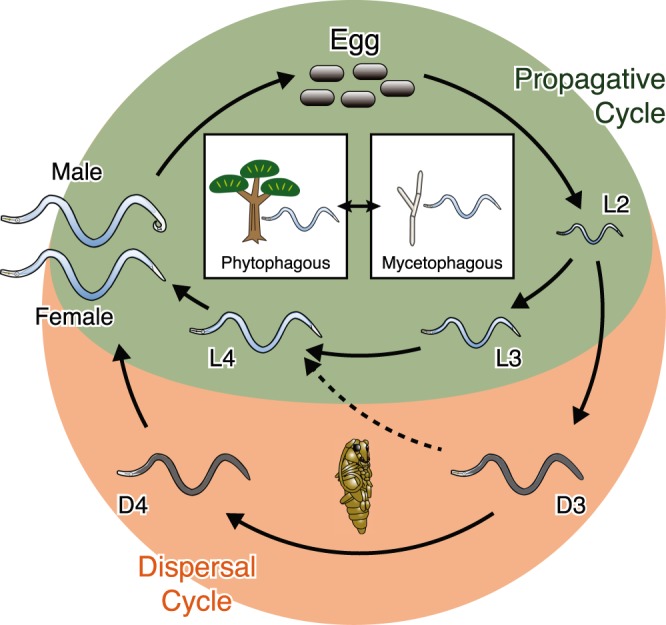Figure 1.

Life cycle of B. xylophilus. In favourable conditions B. xylophilus multiplies via a propagative cycle by feeding on plant cell (phytophagous phase) or fungal hyphae (mycetophagous phase). In unfavourable conditions, the nematode switches to the dispersal cycle in which the second-stage larvae (L2) moult to the dispersal third-stage juvenile (D3) and subsequently to the dispersal fourth-stage juvenile (D4) in a presence of the vector insect, which enters the vector beetle for dispersion.
